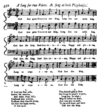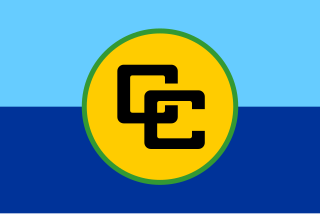
The Caribbean Community is an intergovernmental organization that is a political and economic union of 15 member states throughout the Caribbean. They have primary objectives to promote economic integration and cooperation among its members, ensure that the benefits of integration are equitably shared, and coordinate foreign policy. The organization was established in 1973 with its four founding members signing the Treaty of Chaguaramas. Its primary activities involve:
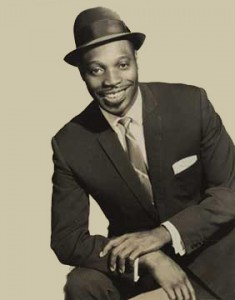
Aldwyn Roberts HBM DA, better known by the stage name Lord Kitchener, was a Trinbagonian calypsonian. He has been described as "the grand master of calypso" and "the greatest calypsonian of the post-war age".
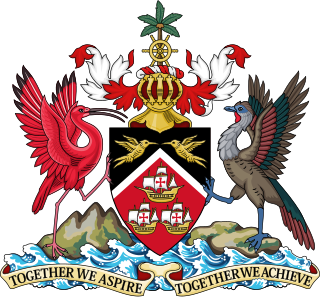
"Forged from the Love of Liberty" is the national anthem of the Trinidad and Tobago. Originally composed as the national anthem for the short-lived West Indies Federation (1958–1962), this song was edited and adopted by Trinidad and Tobago when it became independent in 1962. It was written and composed by Patrick S. Castagne.

The governor-general of Barbados was the representative of the Barbadian monarch from independence in 1966 until the establishment of a republic in 2021. Under the government's Table of Precedence for Barbados, the governor-general of Barbados was regarded as being the most important of all personnel of the Barbados government.
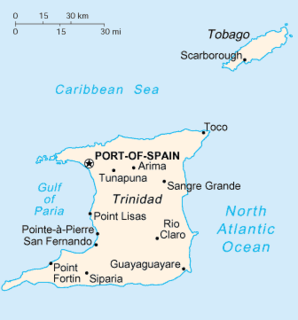
Trinidad is the larger and more populous of the two major islands of Trinidad and Tobago. The island lies 11 km (6.8 mi) off the northeastern coast of Venezuela and sits on the continental shelf of South America. It is often referred to as the southernmost island in the West Indies. With an area of 4,768 km2 (1,841 sq mi), it is also the fifth largest in the West Indies.

The president of the Republic of Trinidad and Tobago is the head of state of Trinidad and Tobago and the commander-in-chief of the Trinidad and Tobago Defence Force. The office was established when the country became a republic in 1976, before which the head of state was the queen of Trinidad and Tobago. The last governor-general, Sir Ellis Clarke, was sworn in as the first president on 1 August 1976 under a transitional arrangement. He was formally chosen as president by an electoral college consisting of members of both houses of Parliament on 24 September 1976, which is now celebrated as Republic Day.

The Trinidad and Tobago Carnival is an annual event held on the Monday and Tuesday before Ash Wednesday in Trinidad and Tobago. This event is well known for participants' colorful costumes and exuberant celebrations. There are numerous cultural events such as "band launch fetes" running in the lead up to the street parade on Carnival Monday and Tuesday. It is said that if the islanders are not celebrating it, then they are preparing for it, while reminiscing about the past year's festival. Traditionally, the festival is associated with calypso music, with its origins formulated in the midst of hardship for enslaved West and Central Africans; however, recently Soca music has replaced calypso as the most celebrated type of music. Costumes, stick-fighting and limbo competitions are also important components of the festival.

The Trinity Cross was the highest of the National Awards of Trinidad and Tobago, between the years 1969 and 2008. It was awarded for: "distinguished and outstanding service to Trinidad and Tobago. It was awarded for gallantry in the face of the enemy, or for gallant conduct." Either nationals or non-nationals were awarded the honour, but no more than five may have been awarded in any year. The President was awarded the Trinity Cross in an ex officio capacity. The award was first presented in 1969, last conferred in 2005, and was subsequently replaced by The Order of the Republic of Trinidad and Tobago in the year 2008.

Trinidad and Tobago, officially the Republic of Trinidad and Tobago, is the southernmost island country in the Caribbean. Consisting of the main islands Trinidad and Tobago, and numerous much smaller islands, it is situated 130 kilometres south of Grenada and 11 kilometres off the coast of northeastern Venezuela. It shares maritime boundaries with Barbados to the northeast, Grenada to the northwest and Venezuela to the south and west. Trinidad and Tobago is generally considered to be part of the West Indies.

The coat of arms of Trinidad and Tobago was designed by a committee formed in 1962 to select the symbols that would be representative of the people of Trinidad and Tobago. The committee included artist Carlisle Chang (1921–2001) and carnival designer George Bailey (1935–1970).
Anthony Williams, ORTT, CM, also known as "Muffman", was an inventor, pioneer and musician of the steel pan.

President's House is the official residence of the President of Trinidad and Tobago, located in the capital city Port of Spain, Trinidad and Tobago. It is next to the Royal Botanic Gardens.

Anthony Thomas Aquinas Carmona is a Trinidadian politician who was the fifth President of Trinidad and Tobago, from 2013 to 2019. Previously he was a High Court Judge at the Supreme Court of Trinidad and Tobago, and he served as a Judge of the International Criminal Court from 2012 to 2013.

The Queen of Trinidad and Tobago was the head of state from independence in 1962 until the abolition of the monarchy in 1976. The monarch's constitutional roles were delegated to a governor-general, who acted on the advice of government ministers.

Belmont, in north-east Port of Spain, in the Republic of Trinidad and Tobago, is located at the foot of the Laventille Hills; it was the city's first suburb. In the 1840s–'50s, parts of the area were settled by Africans rescued by the Royal Navy from illegal slaving ships. In the 1880s–'90s, the population swelled rapidly, and the characteristic Belmont street pattern of narrow, winding lanes developed. The black professional class built large homes in Belmont, as they were excluded from the more expensive neighbourhoods such as St. Clair and Maraval; Belmont became known as "the Black St. Clair". Many of these large homes have been renovated and converted to business use, but some remain in family hands. Belmont currently is a lower-middle to middle-class residential neighbourhood. It was the birthplace and early home of many important Carnival designers and bandleaders. Belmont has 9,035 inhabitants.

Paula-Mae Weekes is a Trinidadian politician and jurist who is the sixth president of Trinidad and Tobago. She is the first female President of Trinidad and Tobago, as well as the second female head of state in Trinidad and Tobago after Elizabeth II and the second female president of African descent in the Americas following Ertha Pascal-Trouillot. She took office on 19 March 2018.
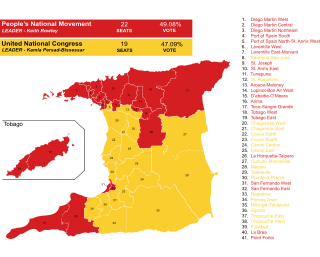
General elections were held in Trinidad and Tobago on Monday, 10 August 2020, to elect 41 members to the 12th Trinidad and Tobago Republican Parliament. It was the 14th election since gaining independence from the United Kingdom in 1962 and the 22nd national election in Trinidad and Tobago ever. Tracy Davidson-Celestine, political leader of the Tobago Council of the People's National Movement (PNM) became the first woman to lead a Tobagonian political party with representation in the House of Representatives. Additionally, two of the three largest parties elected in 2015, the United National Congress (UNC) and the Congress of the People (COP), were led by women.

The Chief Secretary of Tobago is the leader of the Tobagonian Government. The Chief Secretary chairs the Tobagonian Cabinet and is primarily responsible for the formulation, development and presentation of Tobagonian Government policy. Additional functions of the Chief Secretary include promoting and representing Tobago in an official capacity, at home and abroad, and responsibility for constitutional affairs, as they relate to devolution and the Tobagonian Government.







